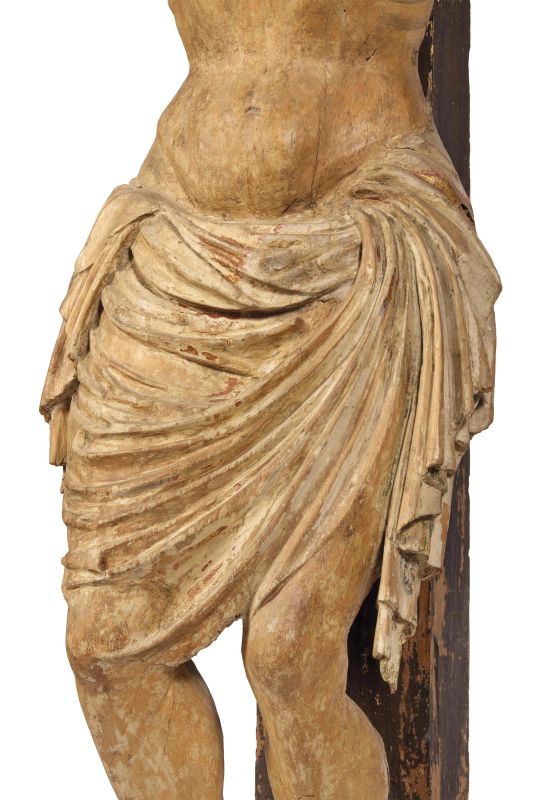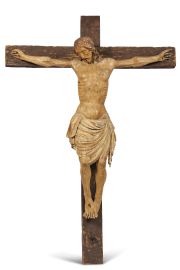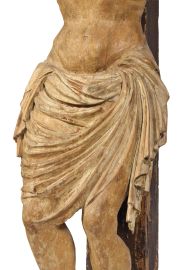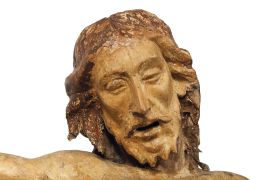Scultore veneto attivo all’inizio del secolo XV
Venetian sculptor active in the early 15th century
CRUCIFIX
painted wood, 160x143 cm, cross 220x153 cm
Reference Literature
A. Markham Schulz, Woodcarving and Woodcarvers in Venice 1350-1550. Florence 2011.
The extraordinary Crucifix follows the traditional pattern in widespread use in Venice as early as the 14th century. The torso is upright but twisted imperceptibly to its proper right; the proper right leg faces forward and the left is slightly bent; the feet are crossed, forming an ‘X’; the arms are not bent but extended almost perfectly horizontally; the abundant loincloth is gathered and draped across the figure with swathes descending at both the left and right; the skeletal structure of the ribcage is rather pronounced above an abdomen contracted along the transverse umbilical plane: all characteristics which are observable in the early 14th-century example in the church of San Nicolò in Venice Lido (fig. 1).
The greater emphasis given to the musculature, above all of the shoulders, the rich drapery of the cloth at the loins and the intense characterisation of the facial features, contorted in a pathetic grimace of pain with parted lips showing the teeth, would, however, suggest a later dating: to the early 15th century, when Antonio Bonvicino’s carved wooden images of the dead Christ (figs. 2-3) had established a new canon for Venetian sacred art (cf. A. Markham Schulz, ‘Antonio Bonvicino and Venetian Crucifixes of the Early Quattrocento’ in Mitteilungendes Kunsthistorisches Institut in Florenz, 2004, 48, 3, pp. 293-332).
As in Bonvicino’s works, what is most conspicuous in our crucifix is Christ’s powerful expression of heroic resignation, here made even more striking by the polychromy which has come down to us mostly intact.
Our sculptor, unfortunately not identified, stands apart in his less emphatic treatment of the ribs and more fleshed-out rendering of the chest; in his description of the angularities of the face with its almost pyramidal cheekbones and sharp nose; and in his different rendering of the beard and hair.
Other distinctive elements of style – such as sumptuous drapery and markedly realistic expressiveness – characterise his language.










